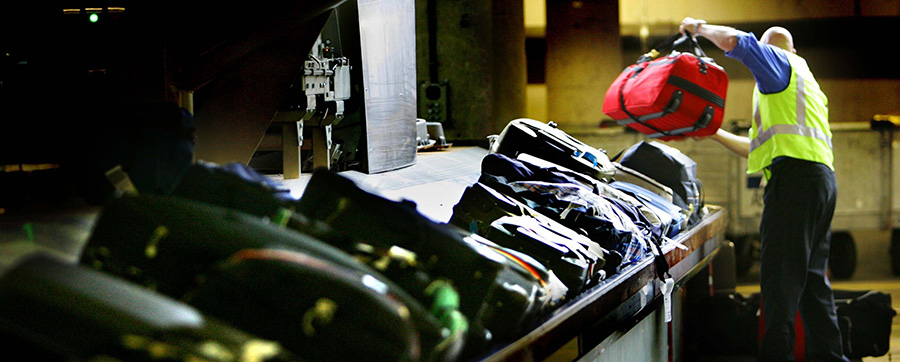The Ins And Outs Of Airport Baggage Handling

Airport baggage handling gets lots of bad press. Most travellers find that at some point or another they will have been left cursing the very system that is used to deliver their bags. This normally happens after your plane has reached its destination; very often with the owners left hanging around in the baggage reclaim section.
Of course, managing a successful baggage handling facility is no easy task. On any given day there are thousands upon thousands of movements that need to take place. Thankfully airports have been quick to recognise the importance of keeping their customers happy. As a result of this most of them feature state of the art baggage handling systems.
This blog post will take a closer look at the main tasks that these systems undertake.
Check in to Departure Gate
Immediately upon handing over your luggage at the check-in desk it is scanned into the system, giving it a unique reference number. Important information relating to your flight, its destination and of course if there are any stop-overs are all recorded against this unique reference.
Now that there is a 10 digit number assigned to your luggage it is very easy to track. Every single computer in the baggage handling area can access the information relating to your luggage. This helps dramatically to help avoid luggage going astray.
The next stage of its journey revolves around an automatic bar-code scanner. From here the exact route for your luggage is then mapped out. These scanning areas feature an array of scanners that are arranged 360 degrees around the conveyor belt. As a result of this, something like 90 percent of all luggage can be successfully scanned and routed. The remaining bags will then go off to a separate area to be manually scanned.
Diverting Your Luggage
In many respects the conveyor system is similar to that of a road network. From time to time there will be blockages caused by other luggage. If this happens the baggage handling computers spring into action and divert your luggage around the blockage. Literally hundreds of different computers work to keep an eye on the system, helping to make sure that the bags get where they need to and on time.
A measure of the success of a system is relatively simple: are the bags able to move from one point to another as quickly as the passengers can? In the event of the bags moving slower the airport will have frustrated passengers on their hands, waiting for their bags to arrive. Sometimes these bags might hold up the flight itself. Of course if the bags move too quickly they might well make connecting flights that the passengers themselves miss.
At any given time your bag will come up against a scanning device. When your bag arrives at a junction the system will use a pushing machine. Put simply this is the machine that either lets your bag pass or pushes it onto another conveyor to make it travel in a different direction. Sadly these “pushing” systems aren’t known for the delicacy. This is quite possibly the one area that causes more damage to luggage than any other. The results of which can be all too easily spotted in the baggage reclaim area, with many of the lesser quality bags showing the signs of excessive handling.
Different Time Constraints
No two airports are the same. As a result of this it can take different amounts of time for passengers to make their own journeys from departure to check in, or vice versa. In some airports this might only be a short walk for passengers; however, in others passengers might have to take a connecting train.
The final stage in the journey of your luggage is when it arrives at either the departure gate or the baggage reclaim centre. Providing the airports baggage handling system has worked well you should find that you are not kept waiting around for too long.
Frankie Hughes is a blogger who recommends using good quality global luggage when travelling; this way it is far less likely for your possessions to get damaged.







